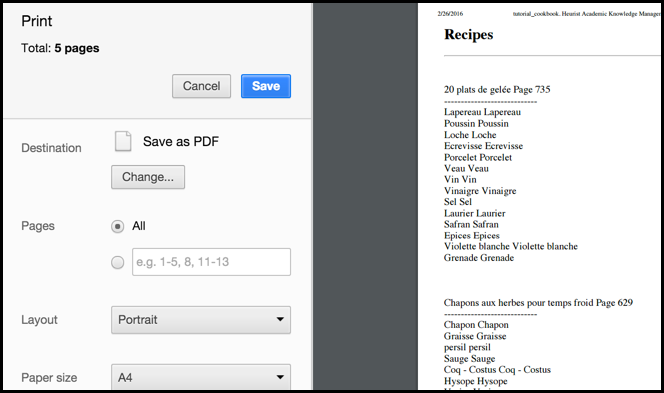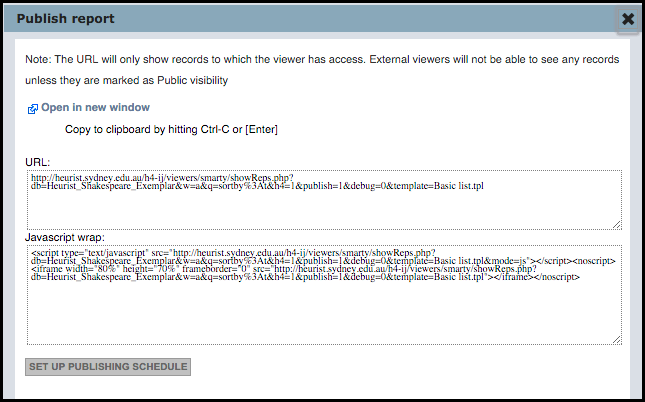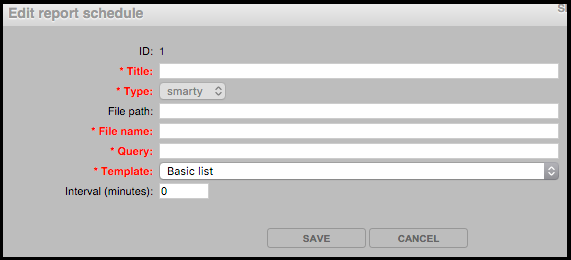The Report view allows you to create, view and dynamically publish your own sophisticated report outputs directly within the Heurist interface. In this way you can publish digital research data to an external audience. For example, generate teaching/research project web site content automatically (including within most Content Management Systems and teaching systems such as WebCT).
Reports are based on stored HTML templates, built up from regular HTML formatting along with Smarty formatting which together determine the formatting and structure of the displayed data and the different actions based on record fields and terms. In addition, advanced users can create and save new templates using the Smarty syntax assisted editor, or external editor.
If you are not familiar with Smarty syntax there are a number of places to go for help:
Simple templates can produce neatly formatted lists in text (e.g. CSV and MTML formats), including media (e.g. images and videos). For example, a report might extract and display the first and last names of all writers born before 1900 along with an alphabetical list of their works. More complex formats can use all the power of the Smarty template language, including PHP functions (standard or user-defined) directly within the template.
Controls for creating, managing and running reports are available from the Report Bar:

Use these buttons as follows:
Run a search query for the records you wish to use in your report. Select the Report View. From the Select Template dropdown, select the report you wish to run.
The report is run based on the searched records using the option selected in the previous step. The report is displayed in the Report View pane.
To re-run the report with different search results, search again. The report will be updated automatically. Use the Refresh button if data has changed.
Run the report (see above).C lick the Print button. This displays the Print screen, showing the print settings and a preview of the report output according to these settings:

Review the report output in the Preview pane. You can scroll through the report pages and use the toolbar to move or resize the pages (for review purposes only). Complete the Print dialog settings as appropriate. If required, modify the report settings.
Note. Alternatively you can use your PC's Print dialog by selecting Print Using System Dialog.
The report preview updates accordingly. When ready, click Print.

This Publish option can be used to copy a link to your published report: either the URL or JavaScript wrap, in order to provide access to the report outside of Heurist. Access will be based on user database access permissions and the permissions you have set for each record. This option also allows you to create report schedules.
To publish a report, Run the report (see above). Select the Publish button. The Publish Report dialog displays. Use the Open in new window option to preview the published report in a separate browser window (i.e. opens the URL as shown in the URL box). Use the Set Up Publishing Schedule button to set up a call for writing reports to file (HTML and JS), to be run on demand or based on a user-defined schedule. (see Schedule Reports below).
Copy one of the following links, as required:
Use the copied link as you wish (e.g. embed in web page to allow external viewers to view the report).

Use this function to set up a call for writing reports to file (HTML and JS). Reports can be run on demand or based on a user-defined schedule.
Note: This function is also accessed through the Publish entry in the Report View menu.
To write a report, Select the Publish button, and then the Set Up Publishing Schedule button. The Scheduled Reports screen displays. This shows any existing reports.
Click Add New Report Schedule, to display the Edit Reports Schedule dialog:

Complete the report details, as follows:
Id |
This identifies the published report and will be generated when the report is published. |
Title |
The title of the generated report. |
Type |
Select the type of report (i.e. the report syntax used). Note. Currently only Smarty reports are supported (see here). |
File Path |
The file path where the report is generated to. Leave blank to use the default path which is: datbasename/generated-reports |
File Name |
The base name of the report files. This will be completed with file types. |
Query |
The Heurist query you used as a base for the report. This is required since the reports are generated dynamically, using the current set of records. |
Template |
The name of the template used to generate this report (defaults to current template). |
Interval |
To schedule a report to be run regularly, specify the interval in minutes between regenerations of the report output. The default is zero (only run on demand.) Leave blank for no schedule. |
When complete, click Save. Your report schedule will be added to the list of scheduled reports.

Note. The Status column indicates whether the report has been run yet.
To edit the report, click the Edit icon.
To run the report, click the Exec icon for that report. This updates the report file (specified in File Path | File Name).
The URLs of the generated files are shown in the HTML and JS columns. Copy these to show the report as a web page or in an iframe (HTML) or embed the report in your web page (JS). Click on a link to view additional details.
Use the Report Menu | Export and Import options to export and import reports as GPL files.
Created with the Personal Edition of HelpNDoc: Produce electronic books easily